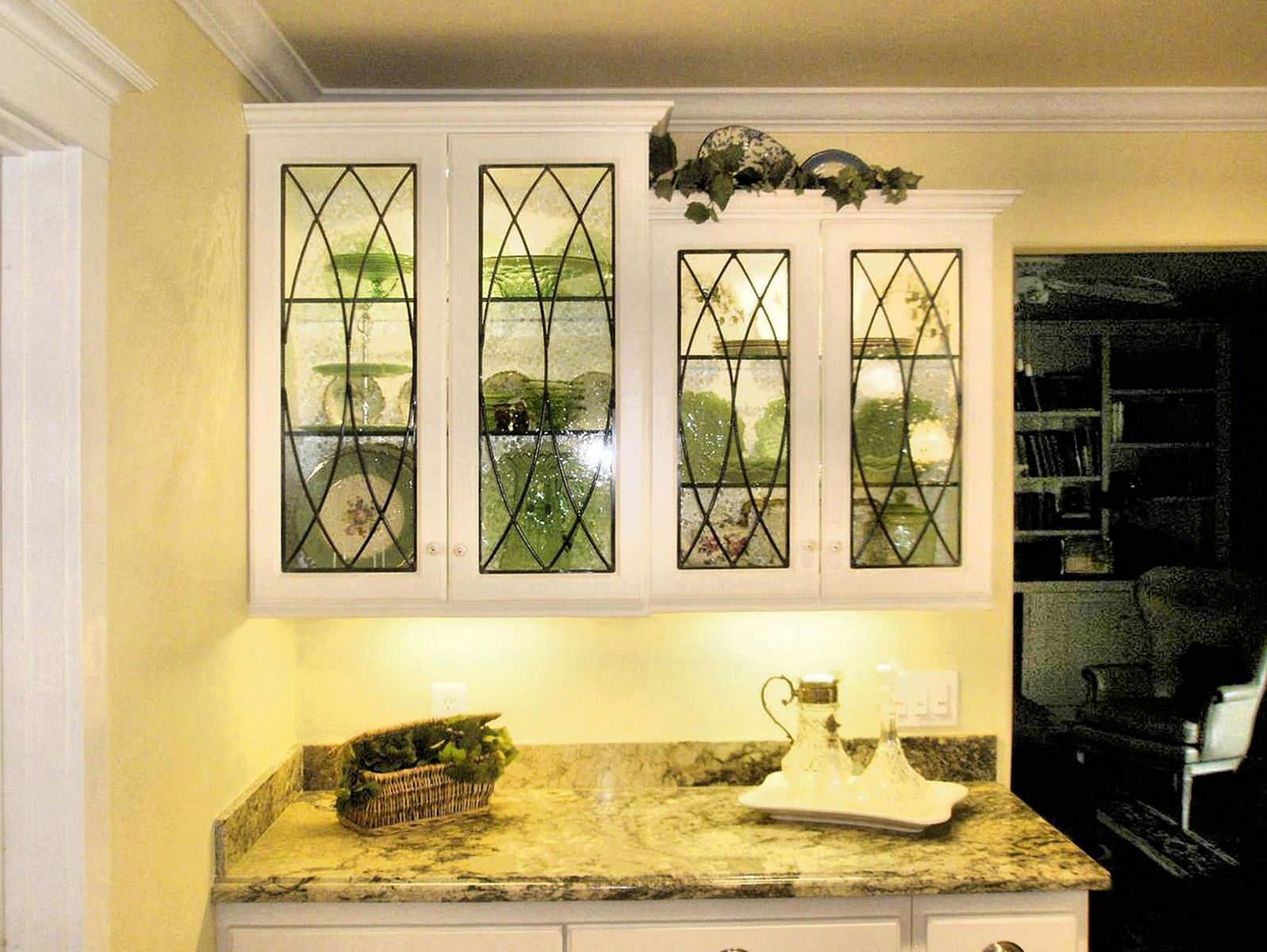Choosing the Right Stained Glass for Your Kitchen

Adding stained glass inserts to your kitchen cabinets can create a unique and beautiful focal point. Whether you’re revamping existing cabinets or designing new ones, choosing the right stained glass is crucial for achieving a harmonious look. This section will guide you through selecting the appropriate stained glass colors, patterns, types, and thicknesses for your kitchen.
Color and Pattern Selection
The color and pattern of your stained glass should complement the overall style and color scheme of your kitchen. Consider the existing colors of your cabinets, countertops, backsplash, and walls.
- Warm and inviting: If your kitchen has a warm and inviting ambiance, choose stained glass in warm tones like reds, oranges, yellows, and browns. Consider patterns that evoke a sense of warmth and comfort, such as floral designs or geometric patterns with curved lines.
- Modern and minimalist: For a modern and minimalist kitchen, opt for stained glass in cool tones like blues, greens, and grays. Simple geometric patterns or abstract designs can add a touch of sophistication without overwhelming the space.
- Traditional and elegant: For a traditional and elegant kitchen, stained glass with intricate patterns, such as stained glass panels with floral motifs or Art Deco designs, can add a touch of grandeur. Consider using stained glass in warm tones like gold, amber, and deep red to create a luxurious feel.
Installation and Maintenance of Stained Glass Kitchen Cabinet Doors: Kitchen Cabinet Door Stained Glass Inserts

Installing stained glass inserts into kitchen cabinet doors is a project that requires precision and care. While it’s possible to do it yourself, professional installation is often recommended for a seamless and lasting result. Here’s a breakdown of the process, potential challenges, and tips for maintaining your stained glass inserts.
Installation of Stained Glass Inserts, Kitchen cabinet door stained glass inserts
Installing stained glass inserts requires careful preparation and execution to ensure a secure and aesthetically pleasing result. Here are the steps involved:
- Measure and Cut the Opening: Precisely measure the space where the stained glass insert will be placed. Using a glass cutter, carefully cut the stained glass to fit the opening.
- Prepare the Cabinet Door: Remove the existing cabinet door panel. Clean the surface thoroughly and ensure it’s free of any debris or imperfections.
- Secure the Stained Glass: Apply a bead of adhesive around the opening, then carefully position the stained glass insert within the frame. Ensure it’s centered and level.
- Install the Stained Glass: Secure the stained glass insert with a suitable glazing compound or epoxy. Allow it to cure completely before reinstalling the cabinet door.
Professional Installation of Stained Glass Inserts
Professional installation offers several advantages, ensuring a high-quality result and minimizing the risk of damage. Here are some reasons why you might consider hiring a professional:
- Expertise and Precision: Professionals have the skills and experience to accurately measure, cut, and install stained glass inserts. They use specialized tools and techniques to ensure a precise fit and a secure installation.
- Safety and Handling: Stained glass is delicate and can be easily damaged. Professionals handle the material with care, minimizing the risk of breakage during installation.
- Warranty and Support: Professional installers often offer warranties on their work, providing peace of mind and ensuring that any issues are addressed promptly.
Risks of DIY Installation of Stained Glass Inserts
Attempting a DIY installation of stained glass inserts can pose several risks, potentially leading to damage, improper installation, or safety hazards. Here are some potential downsides:
- Damage to the Stained Glass: Improper handling or cutting can result in chips, cracks, or scratches on the stained glass.
- Incorrect Measurements: Inaccurate measurements can lead to a misaligned or poorly fitted stained glass insert, affecting its appearance and security.
- Improper Installation: Using inappropriate adhesives or installation techniques can weaken the bond between the stained glass and the cabinet door, leading to instability and potential damage.
Cleaning and Maintaining Stained Glass Inserts
Regular cleaning and maintenance are essential to preserve the beauty and longevity of your stained glass inserts. Here’s how to keep them looking their best:
- Gentle Cleaning: Use a soft cloth and a mild cleaning solution, like soapy water, to wipe away dust and grime. Avoid harsh chemicals or abrasive cleaners that can damage the glass.
- Avoid Abrasives: Do not use abrasive cleaners, steel wool, or scouring pads on the stained glass surface. These materials can scratch the glass and dull its finish.
- Polishing: For a deeper clean, you can use a specialized glass cleaner and a soft cloth to polish the stained glass.
Protecting Stained Glass Inserts from Damage
Kitchen environments can be prone to spills, splashes, and other potential hazards. Taking steps to protect your stained glass inserts is crucial to ensure their long-term beauty:
- Avoid Harsh Sprays: Avoid using harsh cleaning sprays or chemicals near the stained glass inserts. These can damage the glass and its surrounding materials.
- Protect from Impacts: Be cautious of sharp objects or heavy items that could potentially impact the stained glass. Consider using protective coverings or barriers when necessary.
- Regular Inspection: Periodically inspect the stained glass inserts for any signs of damage or loose glazing. Address any issues promptly to prevent further deterioration.
